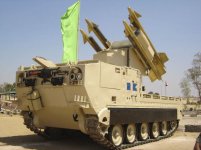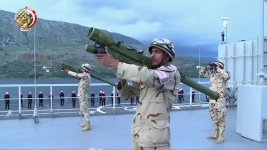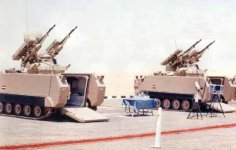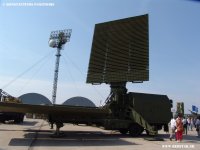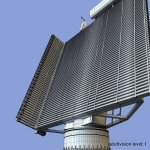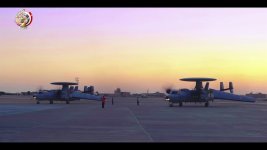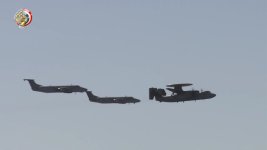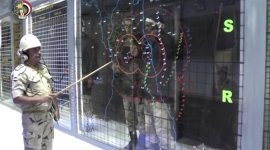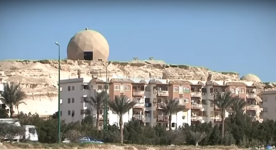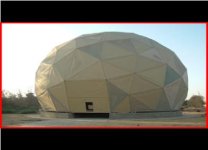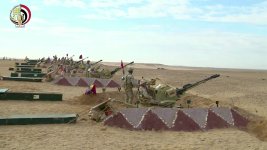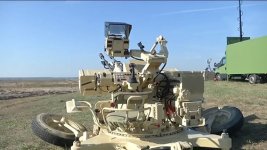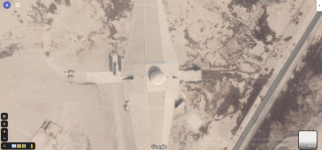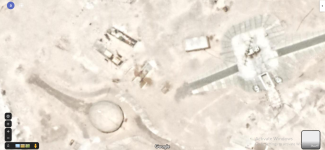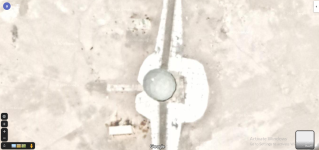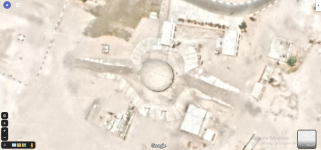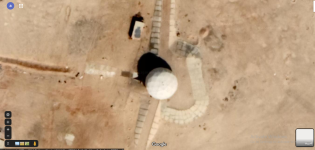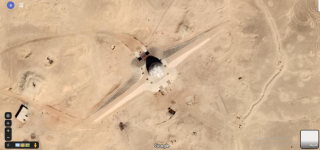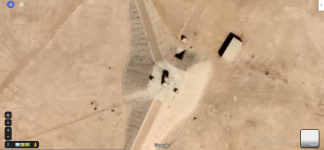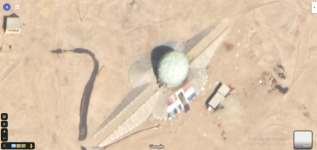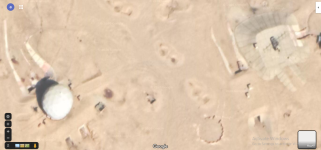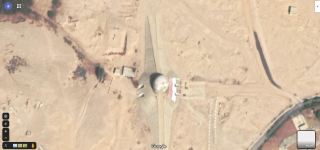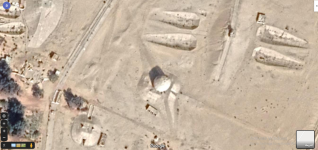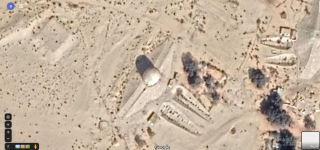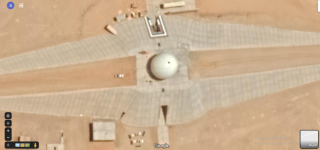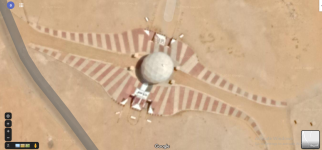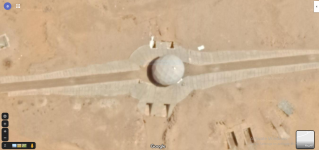Navigation
Install the app
How to install the app on iOS
Follow along with the video below to see how to install our site as a web app on your home screen.
Note: This feature may not be available in some browsers.
More options
Style variation
You are using an out of date browser. It may not display this or other websites correctly.
You should upgrade or use an alternative browser.
You should upgrade or use an alternative browser.
Egyptian Air Defense
- Thread starter The SC
- Start date
Zarvan
Elite Member
- Apr 28, 2011
- 55,621
- 65,659
- Country of Origin

- Country of Residence

Egypt also needs AWACS.Commander SL long-range tactical air survey and early warning radar operating in the Egyptian Air Defense Forces
The Commander SL is British-made and produced by BAE Systems for Defense Industries.
It is a three-dimensional radar that operates on the S-Band (including the E/F-Band) that performs aerial survey tasks and identifies the enemy and friend. It has a tremendous ability to resist all means of electronic jamming (ECCM) and is capable of detecting future air threats such as UAV drones, cruise missiles, and munitions. Long Range Stand-off Weapons, especially at low altitudes. It also has the technology of detecting the height from a single pulse in the vertical direction, Phased mono-pulse height measurement, meaning that it can detect the height of the target from the first time without the need for confirmation. This is in addition to the ability to identify the enemy and friend (IFF) as a secondary scanning radar (SSR) Secondary Surveillance Radar, as the main radar’s mission is limited only to detecting air targets, but the secondary radar relies on the electronic transponder response devices to determine the identity of the aircraft itself.
The radar also features air-cooled TRIMS Solid-State Transmit Receive Integrated Modules installed behind the radar antennas as a highly reliable source of RF Radio Frequency with built-in redundancy.
The radar has tremendous operating reliability, as the average time between critical failures (MTBCF Mean Time Between Critical Failures) is about 1,500 hours of continuous operation with an operational readiness of 99%, and the average time required for maintenance (MTTR Meat Time To Repair) is only about 30 minutes, and low time requirements for maintenance, Finally, there is a built-in system for automatically identifying faults known as BITE.
The radar has a horizontal scanning range of up to 470 km and a detection ceiling of up to 30 km with a 20 degree elevation coverage angle and an electronic beam tilt rate of -2 degrees ~ +5.8 degrees.
View attachment 38557
View attachment 38560
“Chinese-Egyptian” radar device, model (YLC-6M)
- It is basically a radar device produced by the Chinese international company (NRIET), and “Egypt” contracted for it and obtained a license to produce it at the “Banha Electronic Industries Company (KATRON)” affiliated with the “Ministry of Military Production” and also contracted to develop it locally..
- It works in the “centimeter” frequency range in the frequency range of (2.7-3) G/Hz..
1 - It is a lightweight two-dimensional (2D) radar device used to detect low and very low aerial targets. This radar uses what is known as “solid state technology” in all its components..
2 - It works in the frequency band (S-BAND)...
3 - “Frequency space width” is (130) M/Hz..
4 - The maximum detection range is (200) km..
5 - The “side-lobe level of the antenna” or (SIDE-LOBE) reaches (300) dB..
6 - The transmitted power of the antenna is (18) kilowatts..
7 – “Vertical/circular” polarization..
8 - The width of the transmitted pulse is (0.8) microseconds for the “narrow” pulse and (100) microseconds for the “wide” pulse..
9 – USAGE:
A - The station is used for the purposes of detecting and warning air targets at low and medium altitudes.
B - Directing the fighters..
C - The station is also used for filling gaps or (GAB FILLING)...
10 - Detection capabilities (COVERAGE):
A - The detection range for a radar cross-sectional area (RCS) target is (2) meters/square with a detection probability of (80)% is (150) km..
B - Maximum height (10) km..
C – Elevation angle (40) degrees..
D - Accuracy of coordinate measurement:
(1) In the range (150) meters..
(2) At an angle of (1.5) degrees..
E - The ability to separate goals:
(1) In the range (150) meters..
(2) At an angle of (1.5) degrees..
11 – Antenna rotation speed (6, 12) revolutions/minute..
12 - Number of automated traffic lines (250)...
13 - Disassembly time (6) minutes and installation time (8) minutes..
14 - The operating time is only (1) minute.
15 – Capabilities to resist disability (ECCM CAPABILITY):
-
A - Frequency agility, each “pulse/group” of pulses (30) frequencies..
B - Choose the frequency that has the least impact on obstruction.
D - A digital system for showing moving targets, or (DMTI)...
E - The radar contains a “digital pulse compression system” or (DPCT)...
16 - The YLC-6M radar uses (MTD PROCESSOR) technology to improve tactical performance, whether in the “military/civilian” field, as there is a version of it used in “regulating the movement of civil aircraft” or (ATC), but it is a “fixed” or non-moving version. It is called (YLC-6 ATC)..
17 - During practical tests on the radar (YLC-6M), it “detected/tracked” the attack helicopter (AH-64 APACHE) from a distance of more than (+30) km.,
18 - The YLC-6M radar contains an “automatic north finder” system, or what is called (AUTOMATIC NORTH FINDIN), via GPS.
19 - The radar (YLC-6M) is equipped with an “automatic fault detection” system (BITE)
View attachment 38558
View attachment 38559
JY-9 radar
It is a Chinese-made three-dimensional radar that works for the Egyptian Air Defense Forces.
- Specialized in detecting aerial targets at low altitudes.
The radar can operate in an environment full of hostile electronic interference.
- He can fill the gaps and monitor airports and coastal defense.
- The duration of setting up or disassembling the radar is within 20 minutes with a crew of four people.
Specifications:
Works on S band
Antenna: dual beam
Antenna rotation capacity: 6: 12 revolutions per minute
Beam aperture: 15°, 18° (vertical)
Power output: 200 kW (peak)
Coverage: 360° (azimuth), 0 - 40° (elevation)
Range: 150 km
Altitude: 10 km
Detection accuracy: 80 meters range; 0.3 degree azimuth
Tracking capacity: 200 air targets
Pictures of radar in Egypt from inside the radome. They are used to protect the radar from weather factors and hide the radar so that it cannot be recognized.
View attachment 38561
View attachment 38562
Russian-made Protivnik-GE amplified warning radar in service with the Egyptian Air Defense Forces
It is a three-dimensional radar that automatically provides the ability to survey long-range air, monitor and track strategic and combat aircraft, ballistic missiles, cruise missiles, drones, and even targets at low subsonic speeds at various altitudes. The radar can also classify air targets according to their type, identify active interference, and also provide aviation Al-Siddiq provides information and various navigational data to direct air support and counter-air defense operations. It possesses Phased Array-Antenna technology and operates on the L band wavelength. .
The radar has an aerial scanning range of up to 480 km and an altitude of up to 200 km. The radar can monitor 150 air targets simultaneously
The radar can work automatically, and the radar can detect faults automatically
View attachment 38563
View attachment 38564
Chinese-made JYL-1 radar used by the Egyptian Air Defense Forces
JYL-1 is a long-range S band (IEEE designation) or E/F band (NATO designation) 3D air surveillance radar. It might be used as either an asset for air traffic control and management purposes
View attachment 38565
View attachment 38566
The SC
INT'L MOD
- Feb 13, 2012
- 41,589
- 40,743
- Country of Origin

- Country of Residence

- Thread starter
- #38
Visual aerial surveillance elements of the Egyptian Air Defense Forces, deployed along the borders and coasts of the country and located within its towers, are equipped with telescopes and electro-optical (TV) and thermal cameras to detect aerial targets flying at very low altitudes, such as cruise missiles, drones, and fighter aircraft, which are very difficult for radars to detect at altitudes lower than 100 metres
The Zionist entity excels at infiltrating at heights of less than 100 meters, and it used it in the attack on the Tammuz nuclear reactor in Iraq in 1981. It also used this method in the attack on the nuclear reactor in Al-Kibar in Deir ez-Zor in Syria in 2007, and it also used it in the attack on the Yarmouk factory in Sudan. In 2012
Visual air surveillance elements of the Egyptian Air Defense Forces are tasked with detecting and reporting hostile air targets flying at altitudes of up to 100 metres.
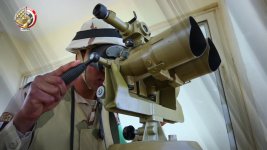


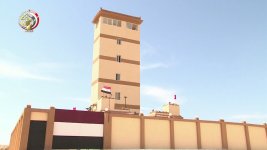
The Zionist entity excels at infiltrating at heights of less than 100 meters, and it used it in the attack on the Tammuz nuclear reactor in Iraq in 1981. It also used this method in the attack on the nuclear reactor in Al-Kibar in Deir ez-Zor in Syria in 2007, and it also used it in the attack on the Yarmouk factory in Sudan. In 2012
Visual air surveillance elements of the Egyptian Air Defense Forces are tasked with detecting and reporting hostile air targets flying at altitudes of up to 100 metres.




Users who are viewing this thread
Total: 1 (members: 0, guests: 1)
Pakistan Defence Latest
-
-
Leaked files expose covert US government plot to ‘destabilize Bangladesh’s politics’ (7 Viewers)
- Latest: LeGenD
-
-
Country Watch Latest
Latest Posts
-
-
-
Meanwhile, all shipping ports on the east coast of the US are about to be shut down (1 Viewer)
- Latest: 100%_Guest
-
-
'OPPO leads after-sales satisfaction in India, followed by Vivo and Samsung': Counterpoint Research (1 Viewer)
- Latest: Beijingwalker

